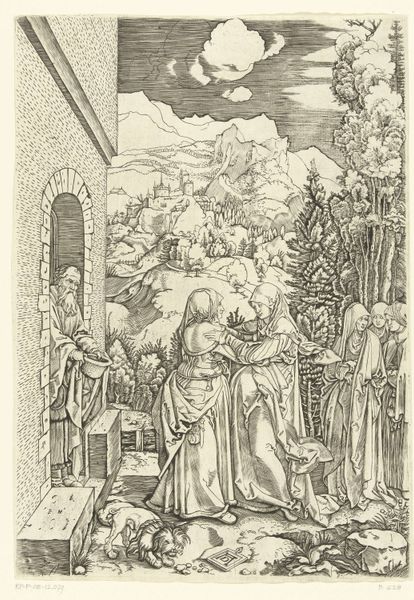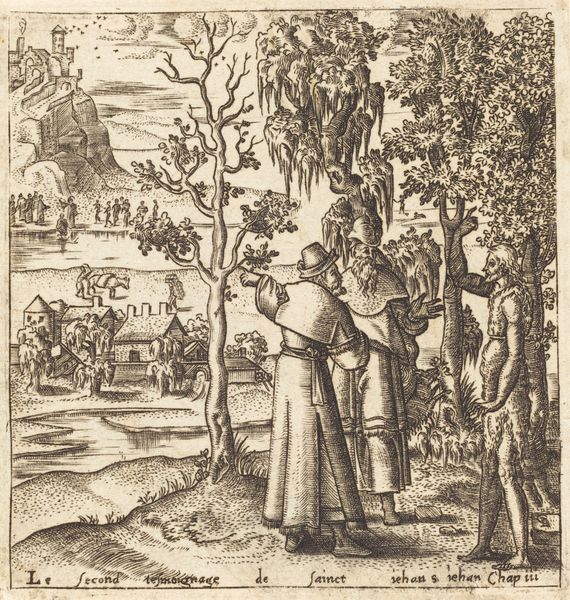
print, woodcut
# print
#
landscape
#
woodcut
#
history-painting
#
northern-renaissance
Dimensions: image: 23.6 x 21.2 cm (9 5/16 x 8 3/8 in.) sheet: 25.2 x 21.9 cm (9 15/16 x 8 5/8 in.)
Copyright: National Gallery of Art: CC0 1.0
Curator: This woodcut, “Saint Bilhelmus,” was created between 1516 and 1518 by Leonhard Beck, a significant figure in the Northern Renaissance. It is an outstanding example of his printmaking style, notable for its intricate details and narrative depth. Editor: The figure commands a sort of humble solemnity. Despite being surrounded by elements of landscape, the eye is constantly drawn back to the weary-looking saint. Curator: Precisely. The formal elements contribute greatly to this effect. Note the texture achieved through meticulous line work; consider the delicate rendering of Saint Bilhelmus's robes in contrast to the density of the surrounding forest. The halation around his head marks him as divine. The print uses hatching and cross-hatching in various ways, demonstrating exceptional control of the medium. Editor: Beyond just the technical skill at play, this image carries powerful social undertones. We have this saint, staff in hand and rosary about his person, traveling on foot through a countryside filled with familiar features—buildings, emblems—begging the question of what kind of socio-political environment motivates such journeys? How might it echo our own realities today? Curator: While context is valuable, analyzing Beck’s rendering also speaks volumes about his era. Note how Beck has employed hierarchic scaling, with the buildings in the background much smaller, indicating a different kind of spatial relationship from what we see in later landscape painting. The work is carefully arranged to lead the eye deeper into the pictorial plane, making for compelling formal harmony. Editor: All Renaissance art is not created equal. Bilhelmus—a character written into a context of great social change, even revolution in Europe. Isn't this a history-painting example, with a story—and politics—to impart to the viewer? By ignoring these elements, mightn't we miss how "Saint Bilhelmus" speaks about questions of agency and obligation to our modern eyes? Curator: Indeed. Perhaps this Northern Renaissance example underscores the complexity of interpreting historical subjects. Viewing solely through a contemporary social justice lens might overwrite nuanced features of craft apparent upon visual contemplation. Editor: And yet, engaging only with formal qualities can erase the profound social realities imprinted upon these figures and the era from which they emerged.
Comments
No comments
Be the first to comment and join the conversation on the ultimate creative platform.













